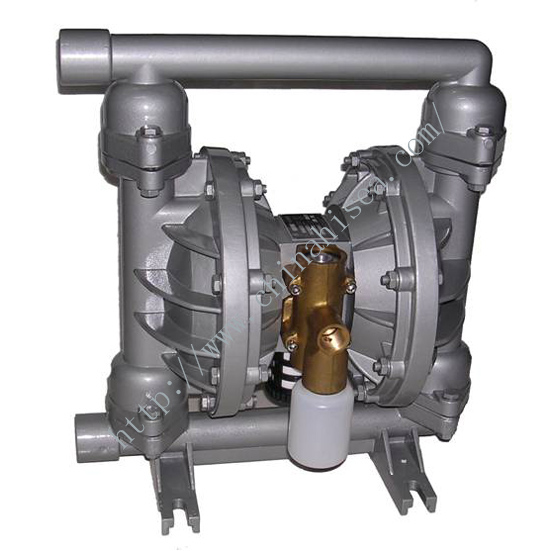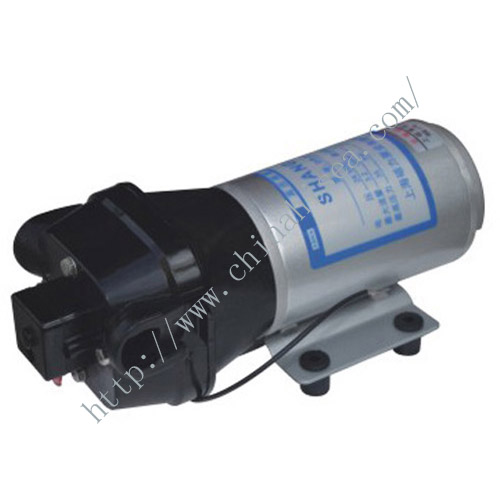Diaphragm Pump
We are the china's most trusted provider for Diaphragm Pump. You Can Buy Various High Quality Diaphragm Pump products from Hi-Sea Group.
A diaphragm pump (also known as a Membrane pump, Air Operated Double Diaphragm Pump (AODD) or Pneumatic Diaphragm Pump) is a positive displacement pump that uses a combination of the reciprocating action of a rubber, thermoplastic or teflon diaphragm and suitable valves either side of the diaphragm (check valve, butterfly valves, flap valves, or any other form of shut-off valves) to pump a fluid.
There are three main types of diaphragm pumps:
1.Those in which the diaphragm is sealed with one side in the fluid to be pumped, and the other in air or hydraulic fluid. The diaphragm is flexed, causing the volume of the pump chamber to increase and decrease. A pair of non-return check valves prevent reverse flow of the fluid.
2.Those employing volumetric positive displacement where the prime mover of the diaphragm is electro-mechanical, working through a crank or geared motor drive, or purely mechanical, such as with a lever or handle. This method flexes the diaphragm through simple mechanical action, and one side of the diaphragm is open to air.
3.Those employing one or more unsealed diaphragms with the fluid to be pumped on both sides. The diaphragm(s) again are flexed, causing the volume to change.
When the volume of a chamber of either type of pump is increased (the diaphragm moving up), the pressure decreases, and fluid is drawn into the chamber. When the chamber pressure later increases from decreased volume (the diaphragm moving down), the fluid previously drawn in is forced out.[3] Finally, the diaphragm moving up once again draws fluid into the chamber, completing the cycle. This action is similar to that of the cylinder in an internal combustion engine.
Diaphragm pumps Characteristics:
have good suction lift characteristics, some are low pressure pumps with low flow rates; others are capable of higher flow rates, dependent on the effective working diameter of the diaphragm and its stroke length. They can handle sludges and slurries with a relatively high amount of grit and solid content.
suitable for discharge pressure up to 1,200 bar
have good dry running characteristics.
can be used to make artificial hearts.
are used to make air pumps for the filters on small fish tanks.
can be up to 97% efficient.
have good self priming capabilities.
can handle highly viscous liquids. A viscosity correction chart can be used as a tool to help prevent under-sizing AOD pumps.
are available for industrial, chemical and hygienic applications.
cause a pulsating flow that may cause water hammer (This can be minimised by using a pulsation dampener)
- Total 3 found
- 1




 +86-23-67956606
+86-23-67956606  +86-23-67956622(Manual)
+86-23-67956622(Manual)
 china-helen332251
china-helen332251


